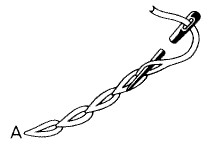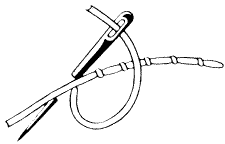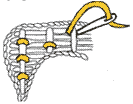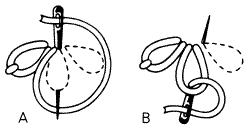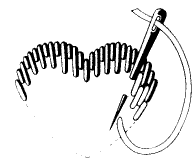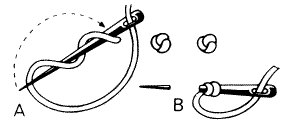12th Century Embroidered Mantle
Jeanne de Robin
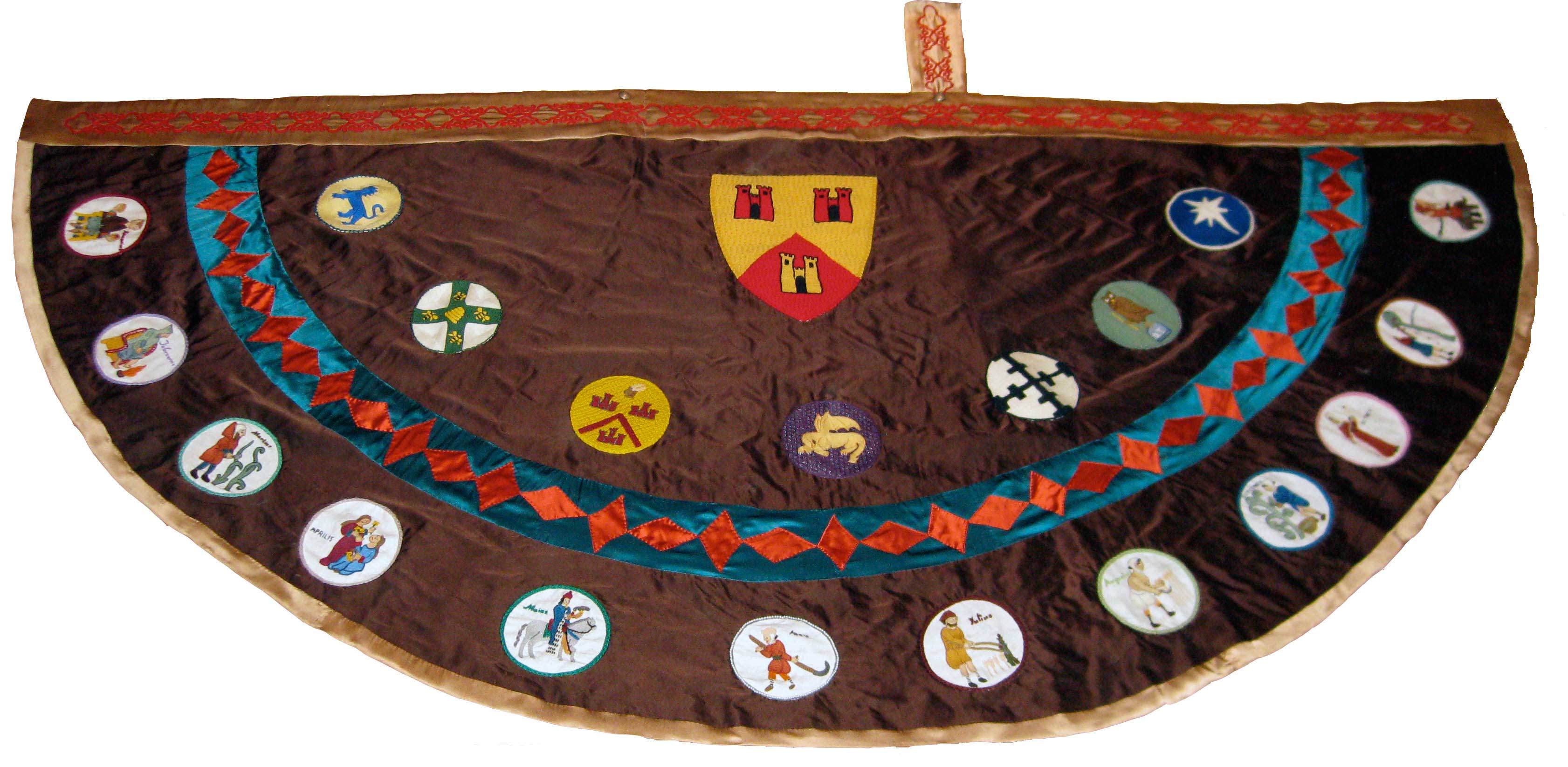
Extent Mantles
The mantle is a symbol of nobility, as such it is an ostentatious garment, heavily embroidered, of luxurious materials, quite often lined with fur and encrusted with gold and jewels. There are several extent mantles and copes in very good condition. The standard shape is a semi-circle approximately 1.5 m in radius. The neckline varies from straight (Figure 1, Figure 5), to rectangular (Figure 2, Figure 3), to oval (Figure 4). Although religious scenes are the most common, secular designs are also found. With the exception of the Hungarian coronation mantle (Figure 1), the embroidery does not cover the full surface of the mantle.
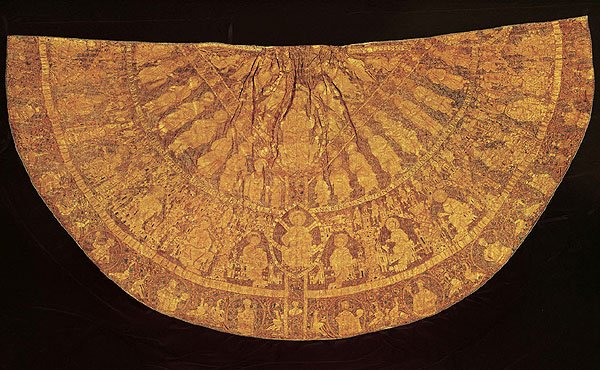
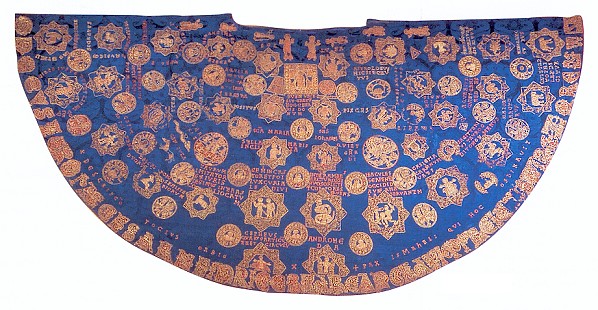
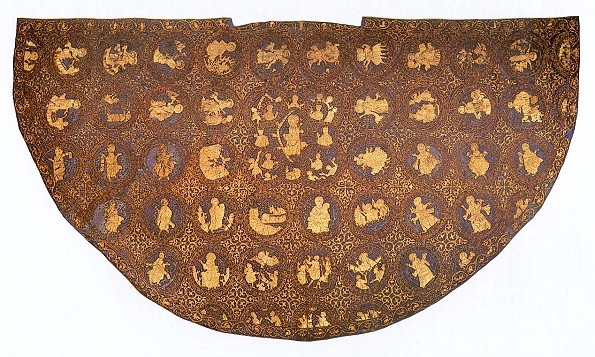
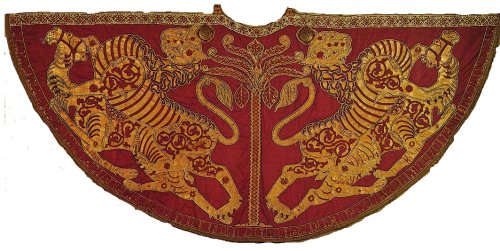
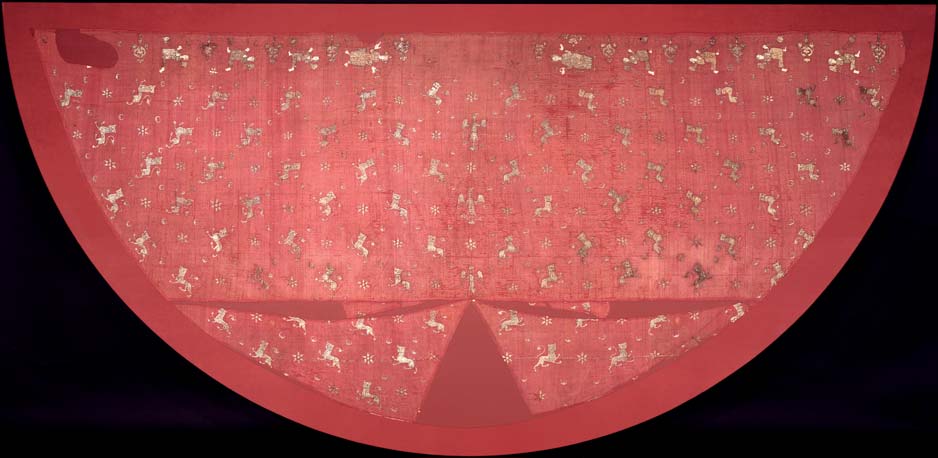
Design
I did not want to make a replica of an extent mantle but rather produce one that was meaningful for me. All of the embroidery except the border was done with commercial tapestry wool on white linen ground that was then appliquéd to a brown silk backing. The mantle is lined with red linen and bordered with gold silk.
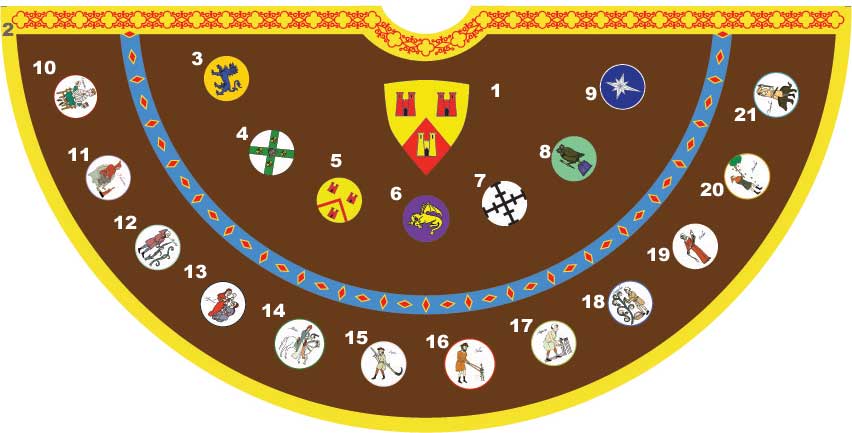
The largest design element is my arms (1): Per chevron or and gules, three castles counterchanged windowed and gated sable.
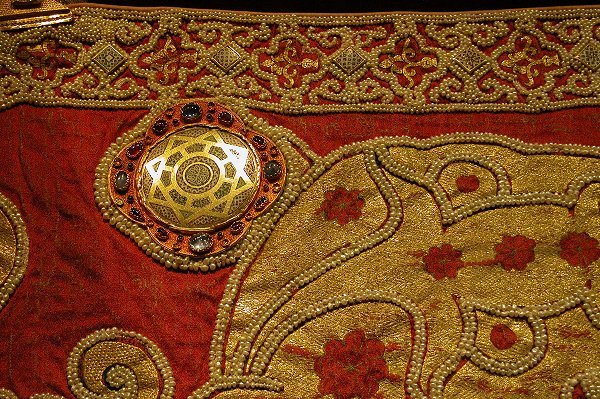
The border (2) is adapted from the pearled border of the coronation mantle of Roger II of Sicily.
Roundels 3-9 represent my affiliations, familial (5,7), territorial (3,6,9) and guild/household (4,8). Roundels 10 through 21 are the 12 labours of the month. A sequence that occurs throughout the middle ages in a variety of mediums, illuminated manuscripts, floor tiles, stone carvings, and embroidered tapestries.
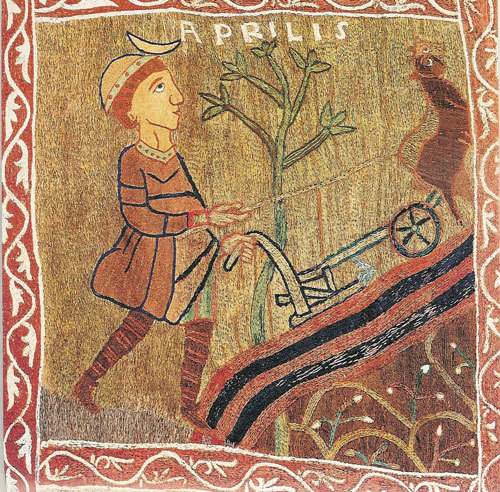
The Girona Tapestry of Creation is one such tapestry, worked in Bokhara couching and stem stitch (Figure 8). Unfortunately a large section of the tapestry was destroyed and only a few months remain.
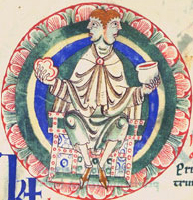
The embroidered roundels were inspired by the calendars of the Fecamp Psalter (1180) and the St-Albans Psalter (c. 1135). The illuminatations were simplified and “traced” in Photoshop and then printed. Blue chalk was used to transfer the designs to the linen ground. I decided to leave the backgrounds of the labours bare, and to outline the roundel with a colour that represents the birthstone for that month. See Appendix A for the source images.
Embroidery
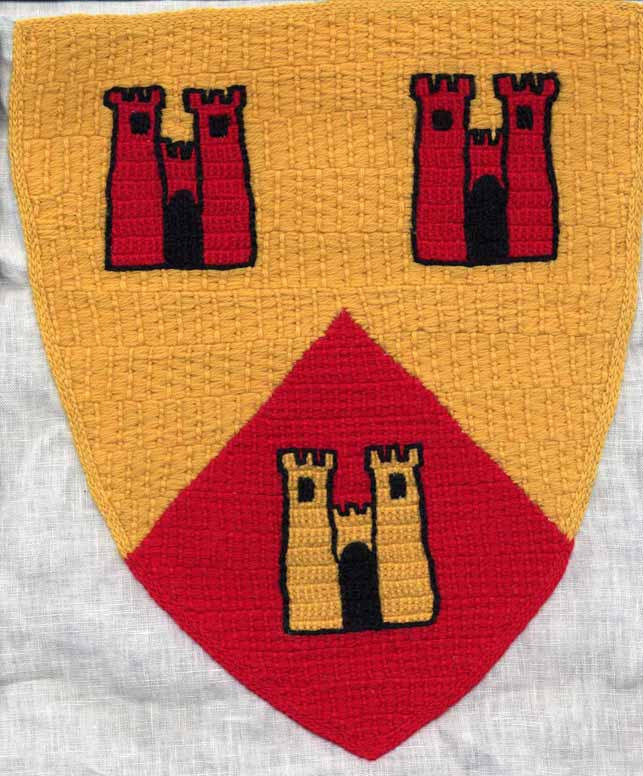
My arms were embroidered in the Bayeux laid stitch, with the outlines in split stitch. This stitch, named for its predominance in the Bayeux Tapestry, was chosen for how quickly and frugally it covers large areas. Embroidery time 15 hours, estimated time for equivalent in split stitch 50 hours.
The front border of the cloak was couched with aproximately 37 meters of square lucet cord. The lucet cord was made from 4 strands of 60/2 silk, and took at least 100 hours to produce. The silk background was backed with 2 layers of linen. The design was transferred to the linen and then the linen and silk were sewn together along the centerline of the pattern with gold silk thread (10 hours). This gave a near invisible yet permanent pattern on the surface of the silk to follow when couching down the cord. It took around 25 hours to couch the cord.

Affliations
The East Kingdom populace badge was embroidered entirely in split stitch with Paternayan yarn.
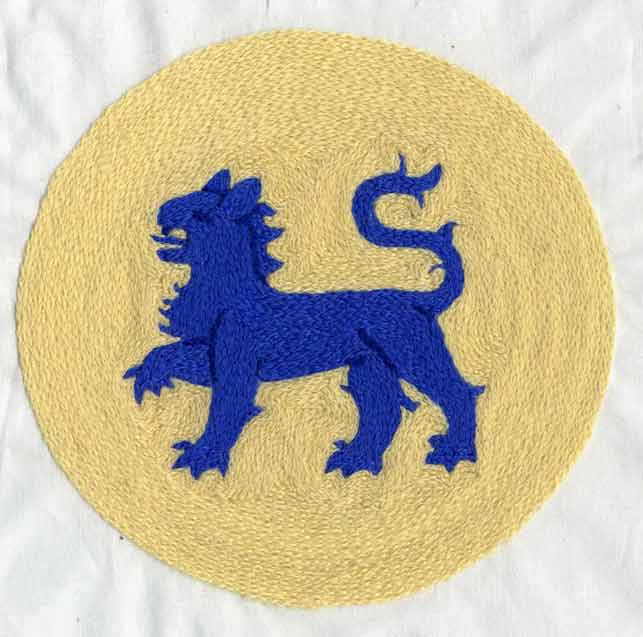
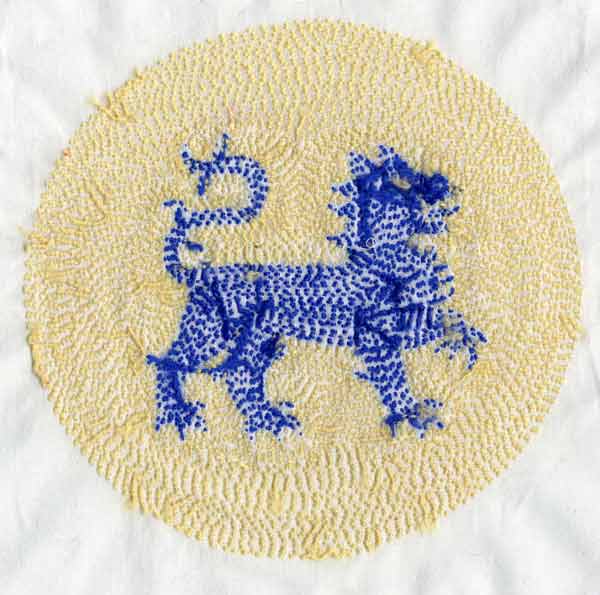
The household of the busy bees has the dubious distinction of being the first piece I ever embroidered in a non-counted technique. Also embroidered in split stitch, the bees and hive are outlined in backstitch.
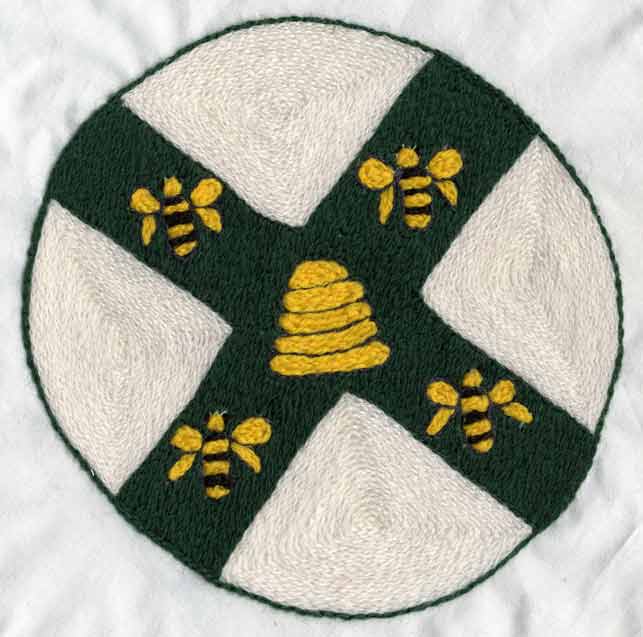
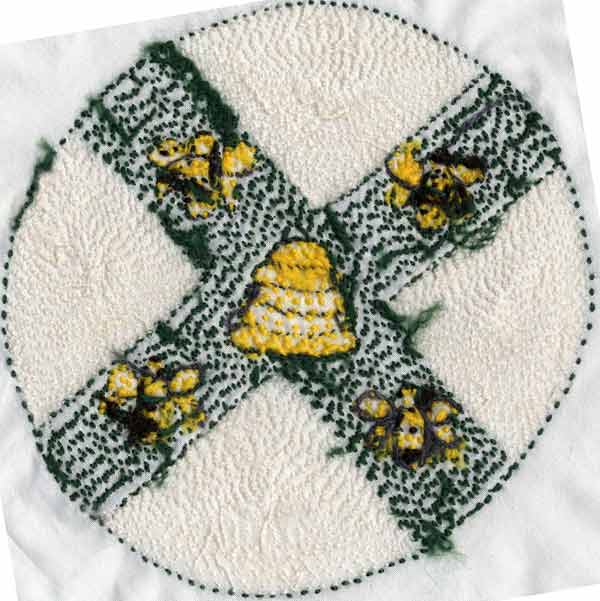
The Hobbins family crest was embroidered with DMC Colbert , the castles and deer heads in split stitch, the background couched in a lattice pattern.
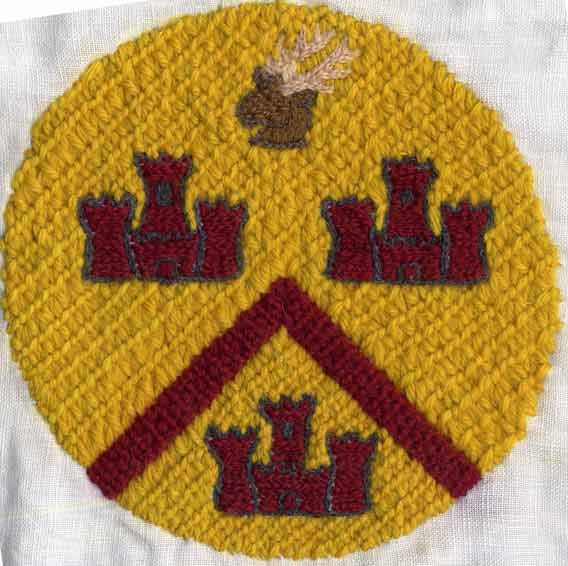
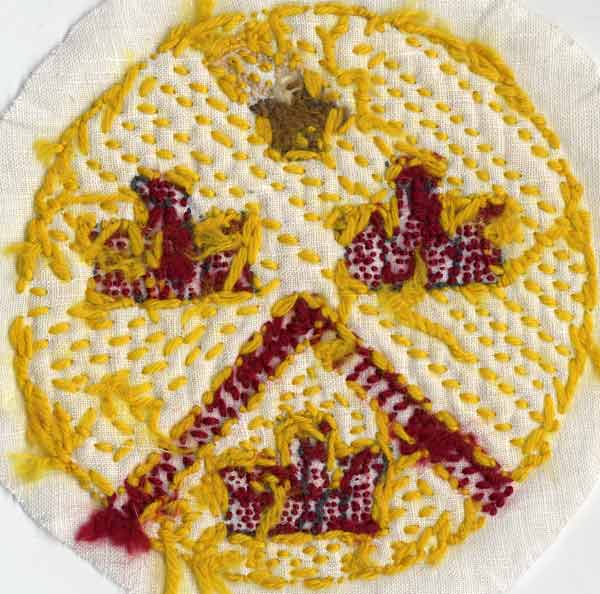
Roundel 6 is Squamifer, the mascot of the Barony of Ile du Dragon Dormant. The dragon is stitched in split sitch and the background is couched in a diamond pattern. Silver thread was chosen as the tie down thread to evoke the colours of IDD, which are Purple, Or and Argent.
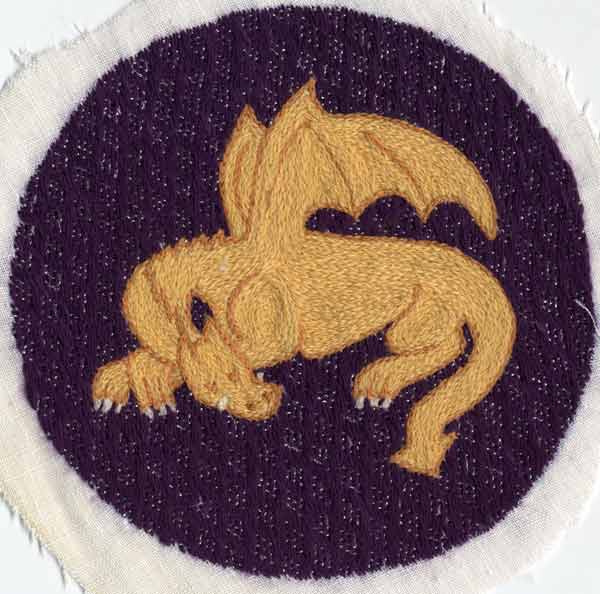
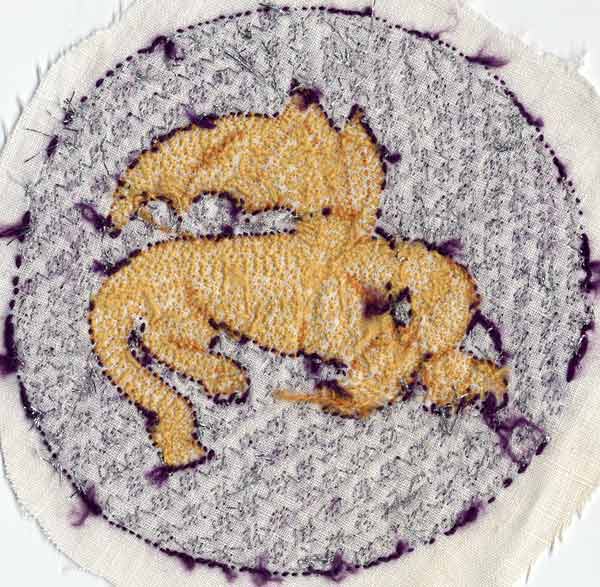
The cross of the Auchinleck family crest was embroidered in Bayeux laid stitch, the background in klosterstitch.
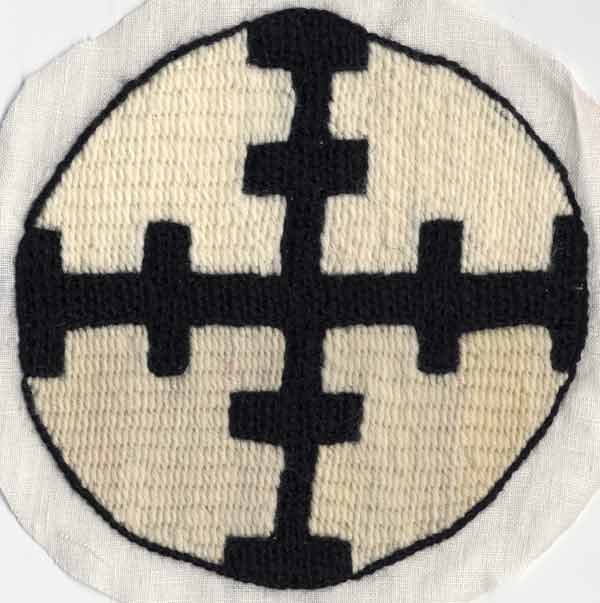
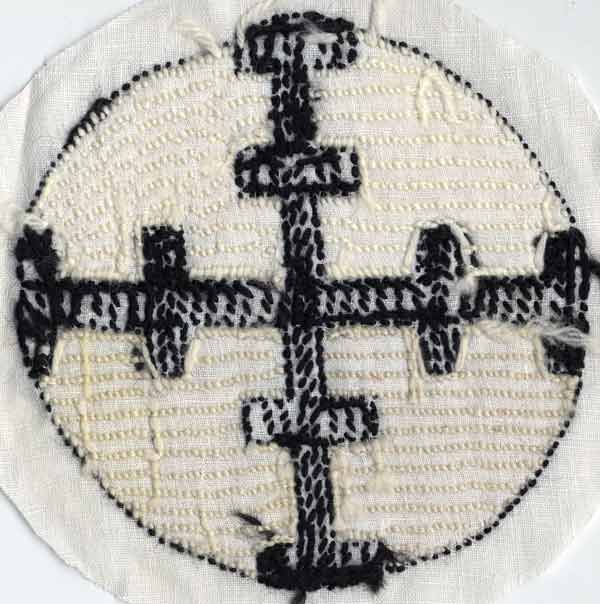
The Athena’s thimble badge was designed by Lady Brynne. The foreground was embroidered in split stich, the background in klosterstitch.
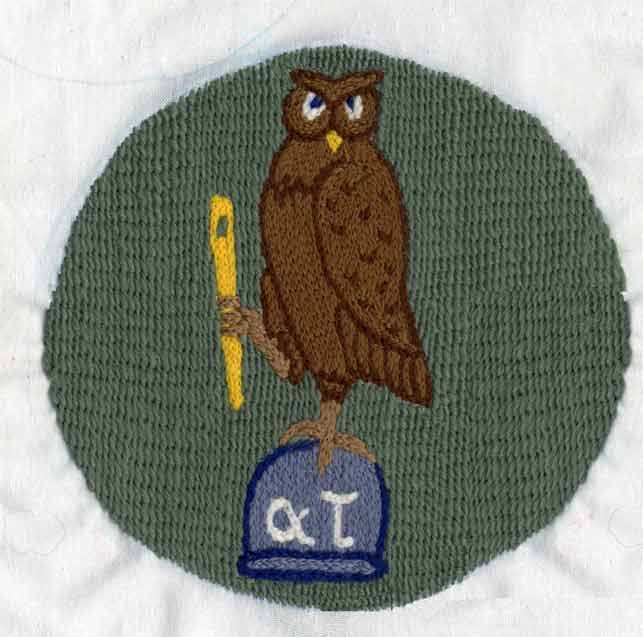
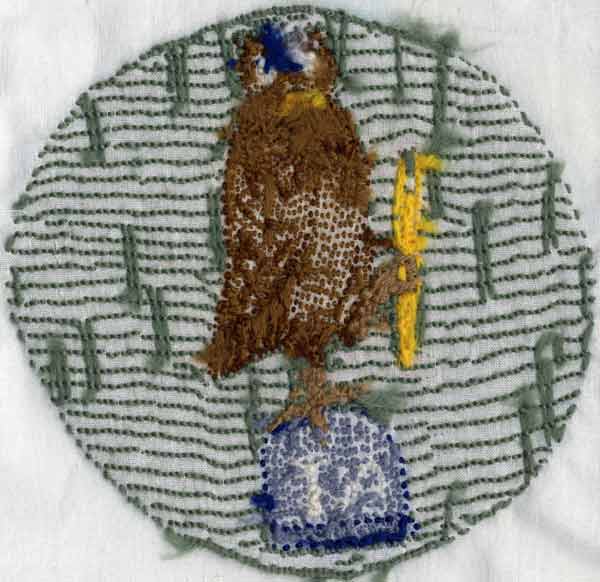
The star of the Northern Shores’ Boreal Army was couched and outlined in chain stitch. The background was embroidered in brick stitch (long and short stitch). Unfortunately no photos are available.
Labours of the Month
Ianuarius, the month of feasting, is mostly embroidered in split stitch, with Janus’ hair in brick stitch. The stone of the month is garnet. The inspiration is the St.-Albans Psalter (first half 12th century)
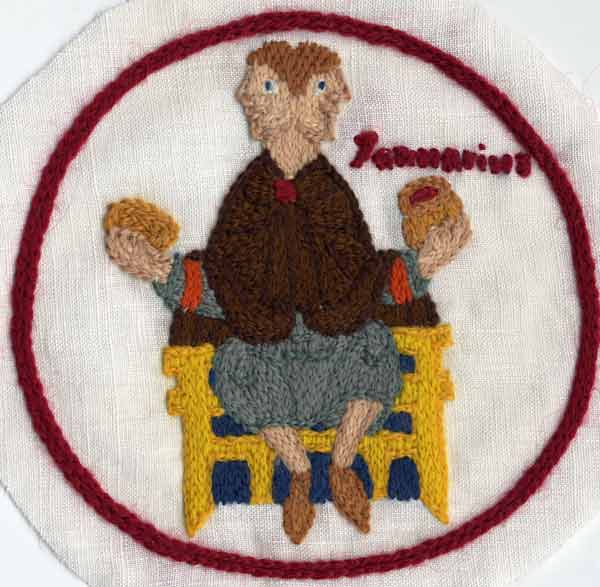
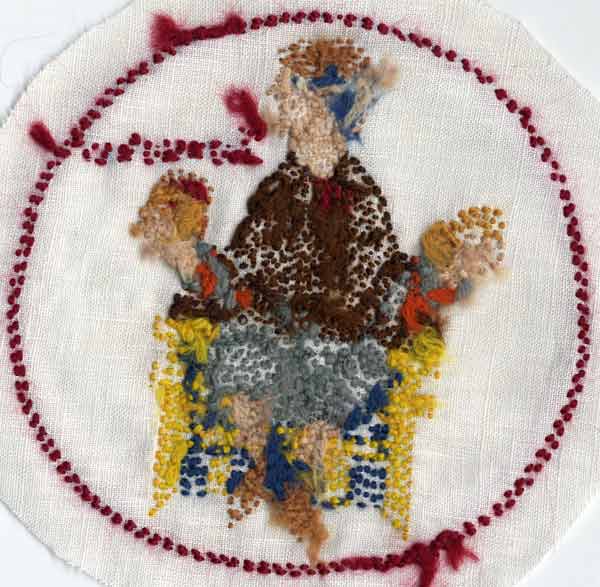

Februarius, a man warming his feet by the fire, is also mainly in split stitch. The chair is embroidered in surface couching with the border decorated with French knots. Amethyst is the stone of the month. Design from the Fecamp Psalter (c.1180)
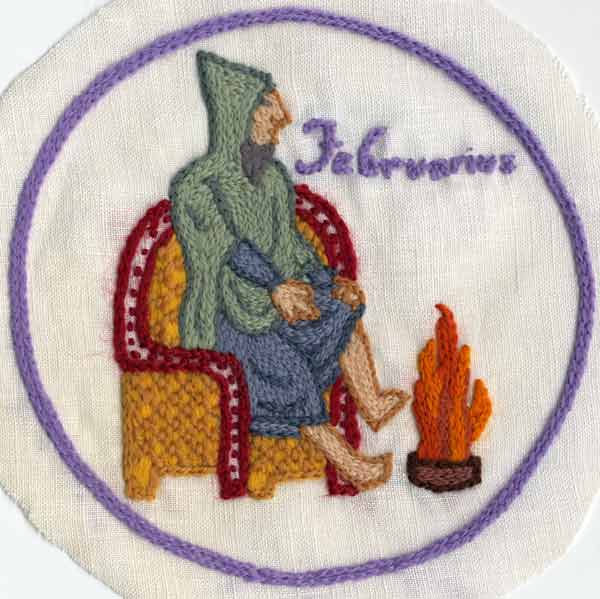
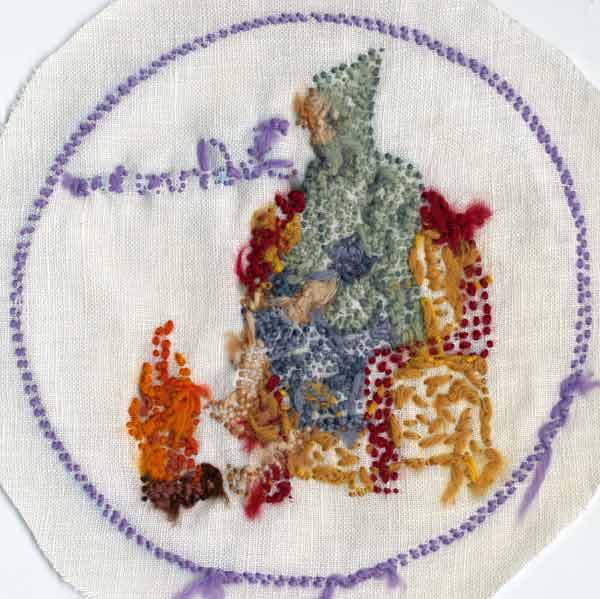

Martius, pruning the vines, is entirely embroidered in split stitch. Aquamarine is the stone of the month. Design from the Fecamp Psalter (c.1180)
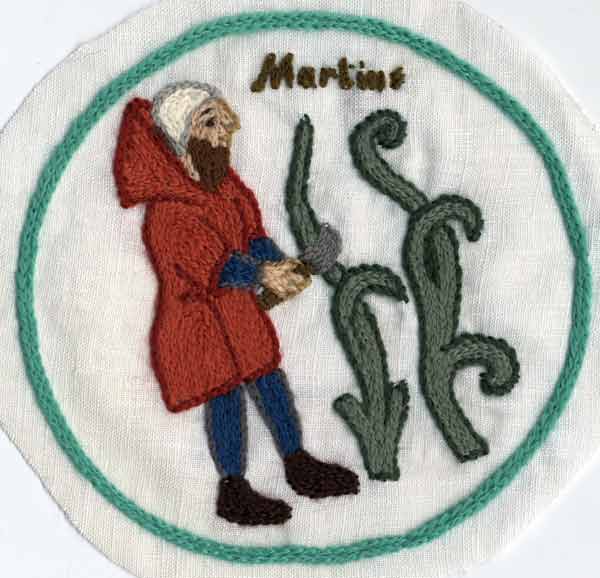
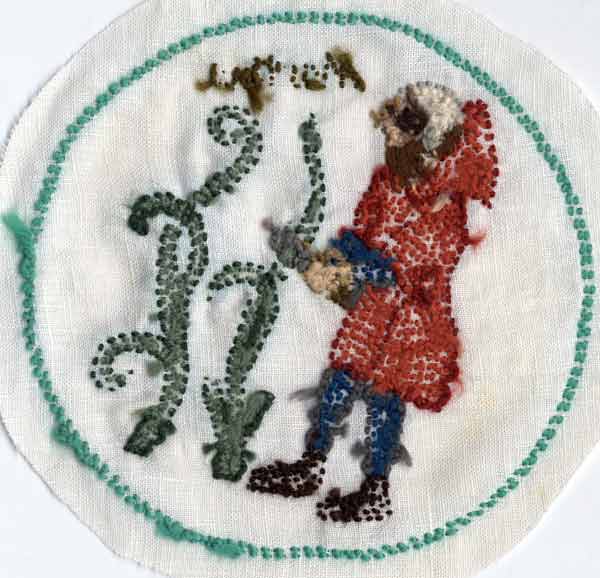

Aprilis, girls picking flowers, has detached chain stitch (flowers) in addition to the split stitch. The stone of the month is Diamond. The inspiration is much later, from a 15th century Book of Hours: Den Haag, KB, 76 G 14 simply because I did not like either Psalter representations (a man holding a flower). Since the miniature is not very detailed, there's very little indications that make this embroidery blantantly later period (the cuffs at the sleeve are about it). There are many depictions of young unmaried women not wearing veils in the 12th century.
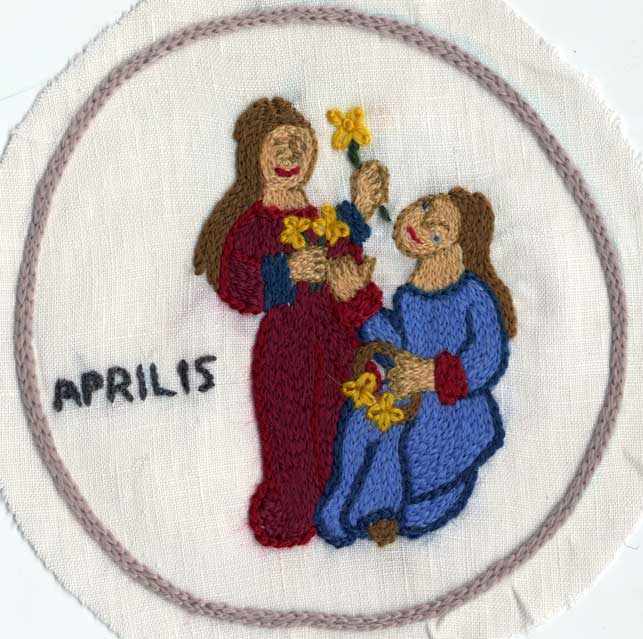
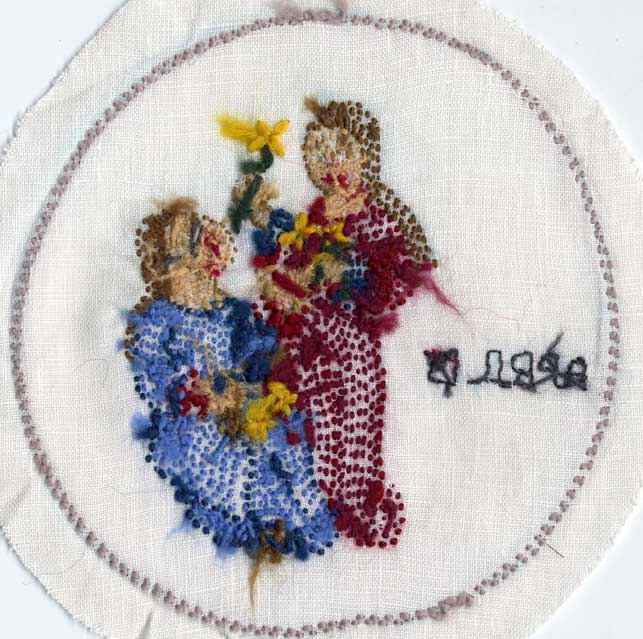

Maius, a man hunting, is predominatly split stitch. The horse’s mane is detached chain stich, the tail and tack is couched and the hunter’s cote is brick stitch.. May’s stone is emerald.
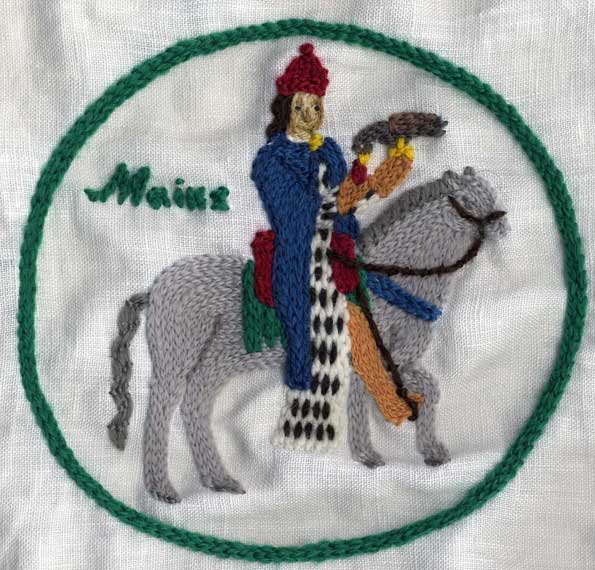
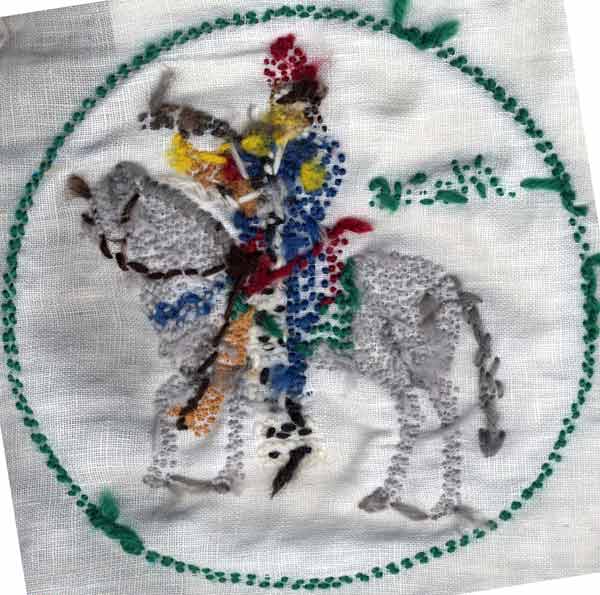

Iunis, a man mowing hay, was embroidered entirely in split stitch. The “stone” of the month is pearl, so I couched a string of pearls (unfortunately fake) on a grey border. I hope to replace the pearls with real ones when finances permit. Design from the Fecamp Psalter (c.1180)
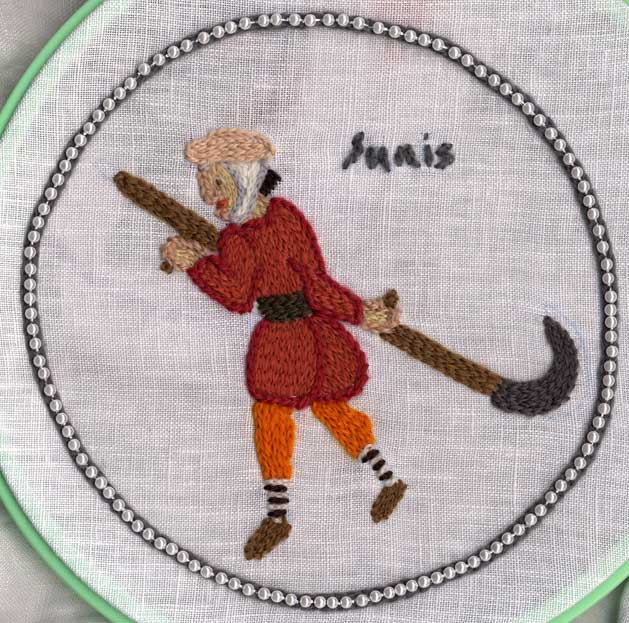
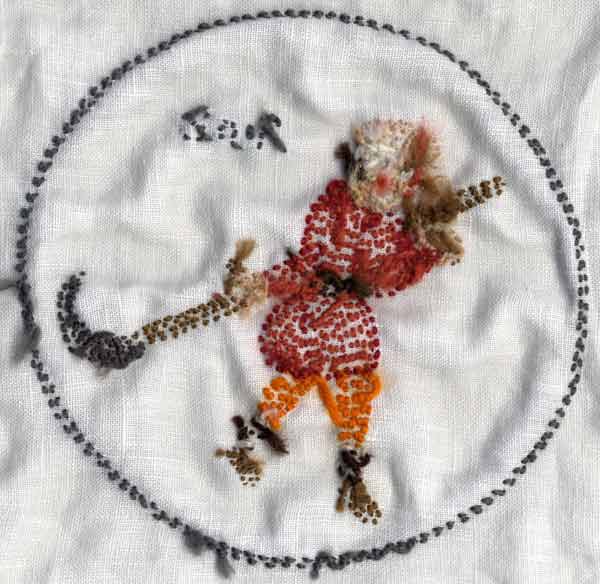

Iulius, a man weeding, is again predominantly split stitch. The sheaves of wheat were embroidered in fly stitch. Ruby is the stone of the month. Design from the Fecamp Psalter (c.1180)
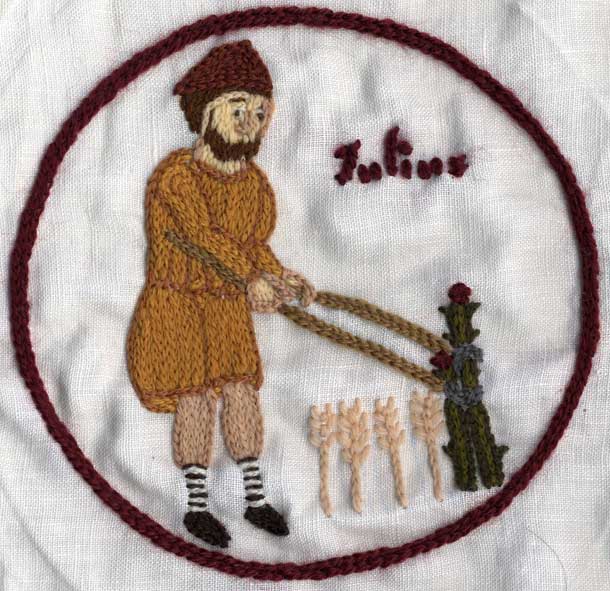
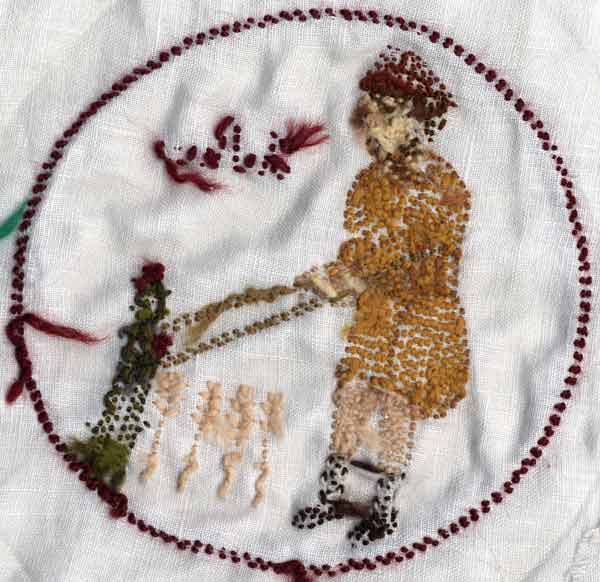

Augustus, a man harvesting grain, is also split stitch with the wheat in fly stitch. The stone of the month is peridot. Design from the Fecamp Psalter (c.1180)
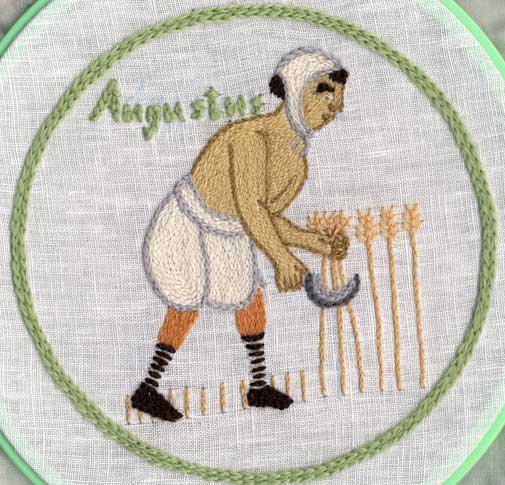
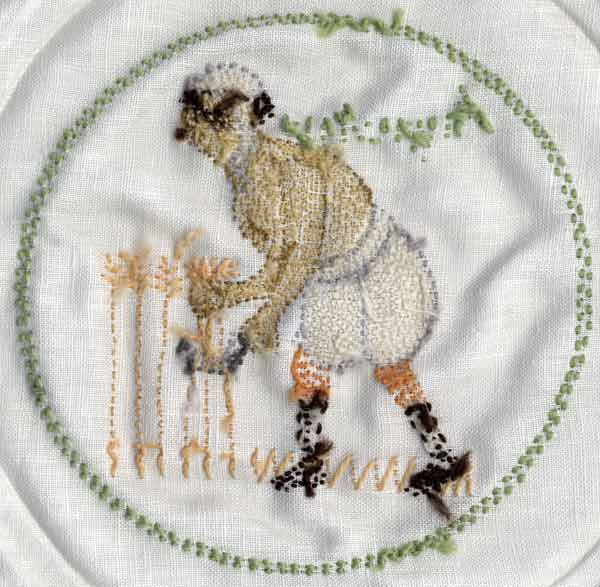

September, a man harvesting grapes, is embroidered in split stitch, with the grapes embroidered with French knots. Saphire is the stone of the month. Design from the Fecamp Psalter (c.1180)
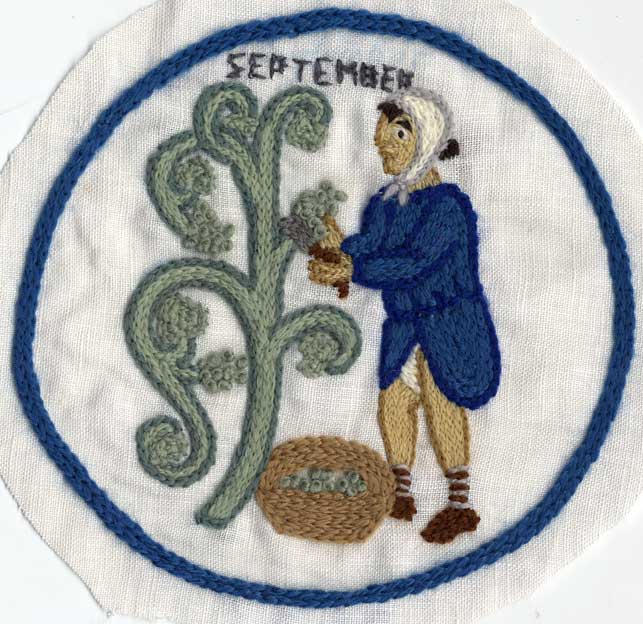
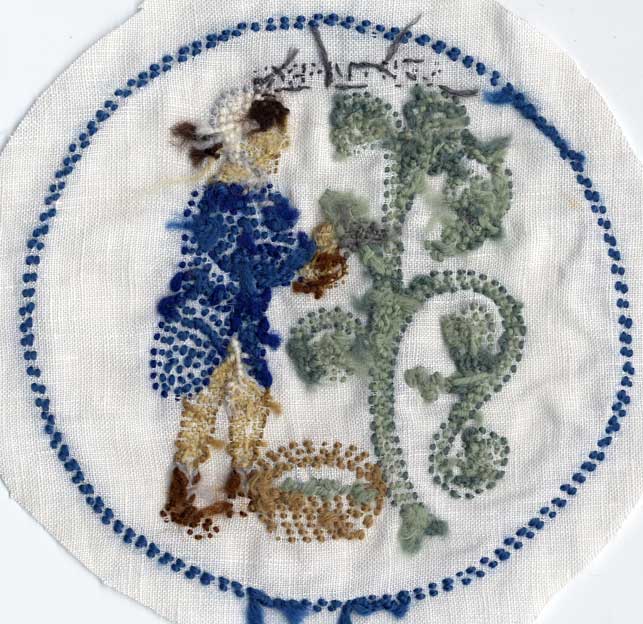

October, a woman spinning, is embroidered in split stitch, with the spun thread couched down. The thread used for wool is a section of the first piece of spinning I ever did. Tourmaline is the stone of the month. Design from the Fecamp Psalter (c.1180)
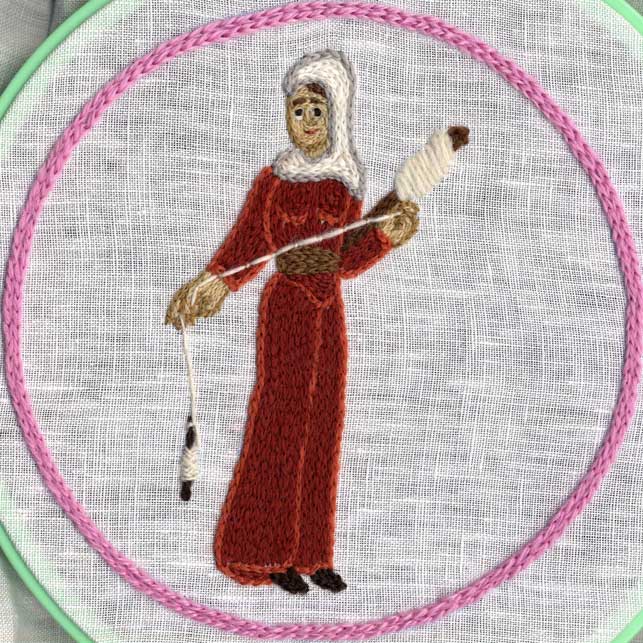
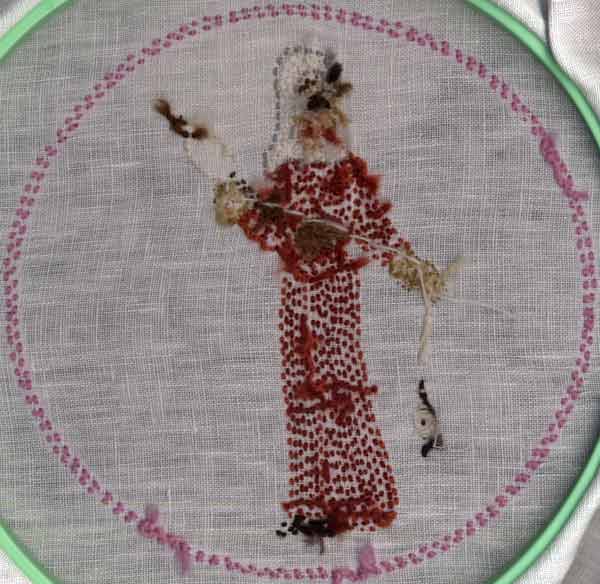

November, a man harvesting acorns, is embroidered entirely in split stitch. November’s stone is topaz. Design from the Fecamp Psalter (c.1180)
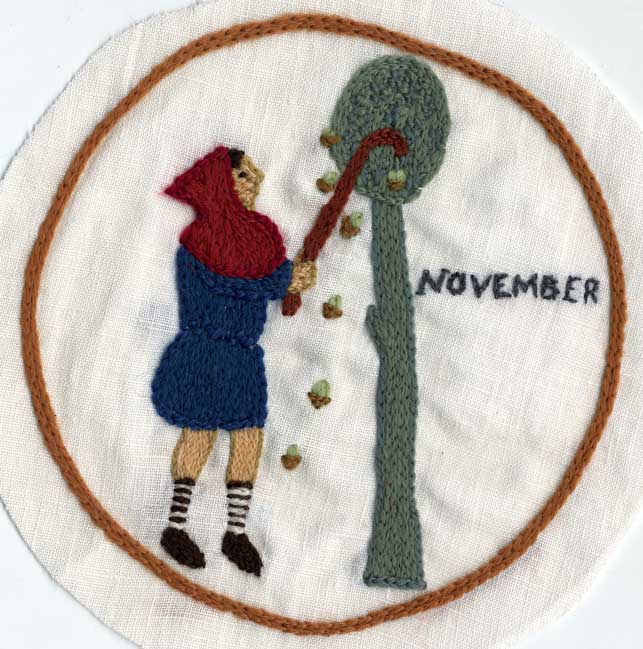
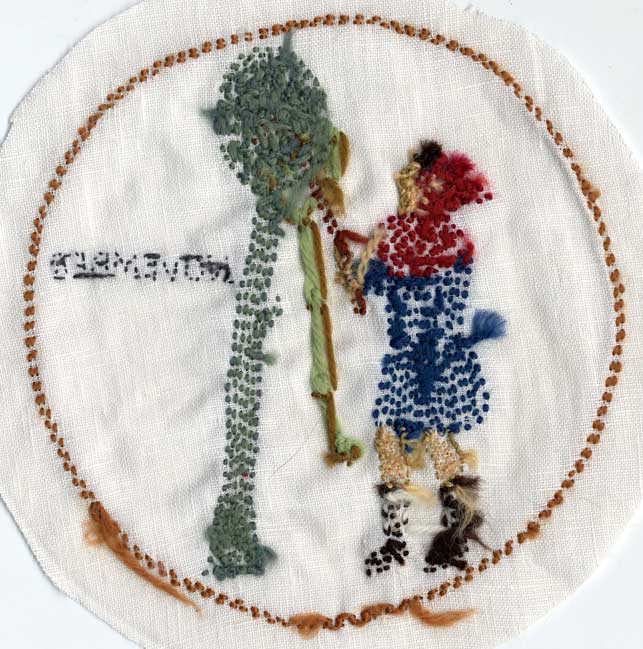

December, a man killing pigs, is also embroidered entirely in split stitch. The stone for December is turquoise. Design from the Fecamp Psalter (c.1180)
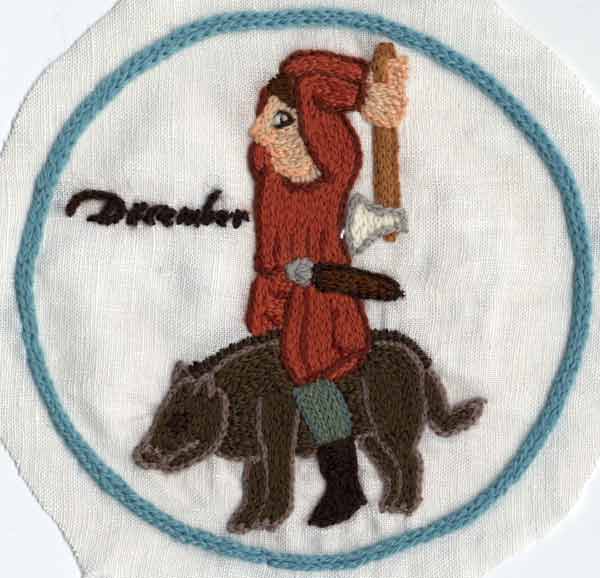
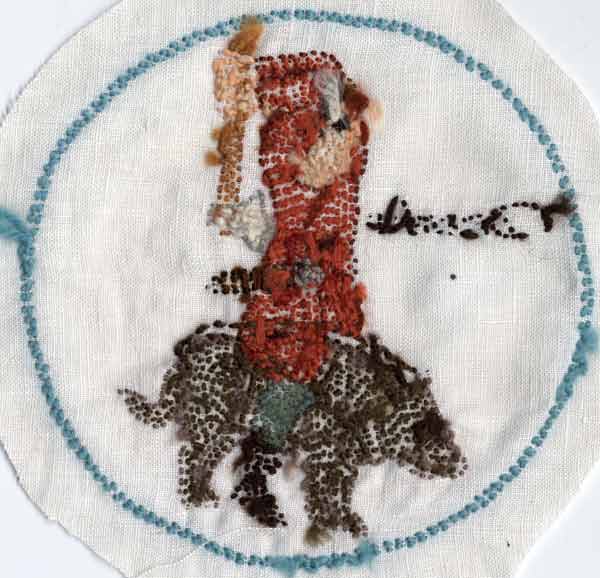
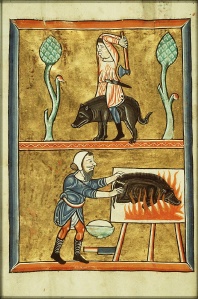
Bibliography
. "historical needlework resources." from http://medieval.webcon.net.au/index.html.
."Den Haag, KB, 76 F 13 (Fecamp Psalter)." from http://collecties.meermanno.nl/handschriften/showmanu?id=1181.
Christie, A. G. I. (1938). English medieval embroidery : a brief survey of English embroidery dating from the beginning of the tenth century until the end of the fourteenth : together with a descriptive catalogue of the surviving examples. Oxford, Clarendon press.
de Gorham, G. "The St Albans Psalter." from http://www.abdn.ac.uk/~lib399/english/index.shtml.
Goddard, E. R. (1927). Women's costume in French texts of the eleventh and twelfth centuries. Baltimore, Md., Paris,, The Johns Hopkins Press; Les Presses universitaires de France.
Peces de Museu (2008). "El Tapís de la Creació." from http://www.pecesdemuseu.com/tapis-creacio/el-tapis.html.
Schuette, M. and S. Müller-Christensen (1964). The art of embroidery. London, Thames and Hudson.
Scott, M. and British Library. (2007). Medieval dress & fashion. London, British Library.
Staniland, K. (1991). Embroiderers. Toronto, University of Toronto Press.
Webb, M. (2006). Embroidery stitches : over 400 contemporary and traditional stitches. Richmond Hill, Ont., Firefly Books.
Wilckens, L. v. (1994). Die mittelalterlichen Textilien : Katalog der Sammlung ; erweitert durch Textilanalysen. Braunschweig,.
Appendix: Stitch Diagrams
|
|
Split Stitch |
Chain Stitch |
|
|
Couching |
Bayeux Laid Stitch |
|
|
Detached Chain Stitch |
Brick Stich |
|
|
Fly Stitch |
French Knot |
© Copyright 2009 Joanna Hobbins
Home
